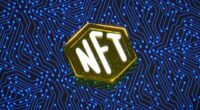As technology continues to advance, so does the internet. The way we interact and consume information online has changed dramatically over the years, and we are now at the cusp of another major shift with the emergence of Web3. But what exactly is Web3, and how does it differ from the current Web2 paradigm? In this article, we will dive into the differences between Web2 and Web3 and explore the potential implications for the future of the internet.
What is Web2?
Web2 refers to the current state of the internet, characterized by centralized platforms, dynamic web content, and increased interactivity. The term was first coined in the early 2000s to describe the second generation of the internet, which represented a major shift from the static, informational web of the 1990s. Key features of Web2 include social media networks, e-commerce platforms, and online multimedia content such as videos and audio.
What is Web3?
Web3, also known as the “Semantic Web,” is the next iteration of the internet and aims to provide a more decentralized, user-controlled experience. The goal of Web3 is to empower users by giving them greater control over their data and online identity. It utilizes blockchain technology to create a secure and transparent network, where data is not controlled by any one central entity. This allows for a more equitable distribution of power and control over the internet.
Key Differences between Web2 and Web3
Centralization vs Decentralization
One of the main differences between Web2 and Web3 is the degree of centralization. Web2 is dominated by a few large companies, such as Google, Facebook, and Amazon, which control the flow of information and profit from the data generated by users. In contrast, Web3 aims to create a decentralized network, where power and control are distributed more equally among users.
User Control over Data
Another key difference is the degree of control users have over their data. In Web2, users’ data is often collected and used by centralized platforms for profit, with little control given to the users themselves. In Web3, users will have greater control over their data and will be able to choose how it is used and shared.
Security and Transparency
Web3 utilizes blockchain technology to provide increased security and transparency. This allows for a secure and transparent network, where data is not controlled by any one central entity. In contrast, Web2 is vulnerable to data breaches and hacking due to its centralized nature.
Potential Implications of Web3
The transition to Web3 has the potential to revolutionize the internet and the way we interact with technology. Some of the potential implications include:
- Increased privacy and security for users
- Greater control over personal data
- A more equitable distribution of power and control over the internet
- The potential for new and innovative applications and services
FAQs:
What is the difference between Web2 and Web3?
How does Web3 aim to empower users?
What are the potential implications of Web3?
Conclusion:
The internet has come a long way since its inception, and Web3 represents the next step in its evolution. By providing a decentralized, user-controlled experience, Web3 has the potential to empower users and revolutionize the way we interact with technology. While there is still much to be done before Web3 becomes a reality, it is an exciting time to be a part of the internet and to see where it will go next.
Notice: Information contained herein is not and should not be construed as an offer, solicitation, or recommendation to buy or sell securities. The information has been obtained from sources we believe to be reliable; however, no guarantee is made or implied with respect to its accuracy, timeliness, or completeness. Authors may own the cryptocurrency they discuss. The information and content are subject to change without notice. Visionary Financial and its affiliates do not provide investment, tax, legal, or accounting advice.
This material has been prepared for informational purposes only and is the opinion of the author, and is not intended to provide, and should not be relied on for, investment, tax, legal, accounting advice. You should consult your own investment, tax, legal, and accounting advisors before engaging in any transaction. All content published by Visionary Financial is not an endorsement whatsoever. Visionary Financial was not compensated to submit this article. Please also visit our Privacy policy; disclaimer; and terms and conditions page for further information.

